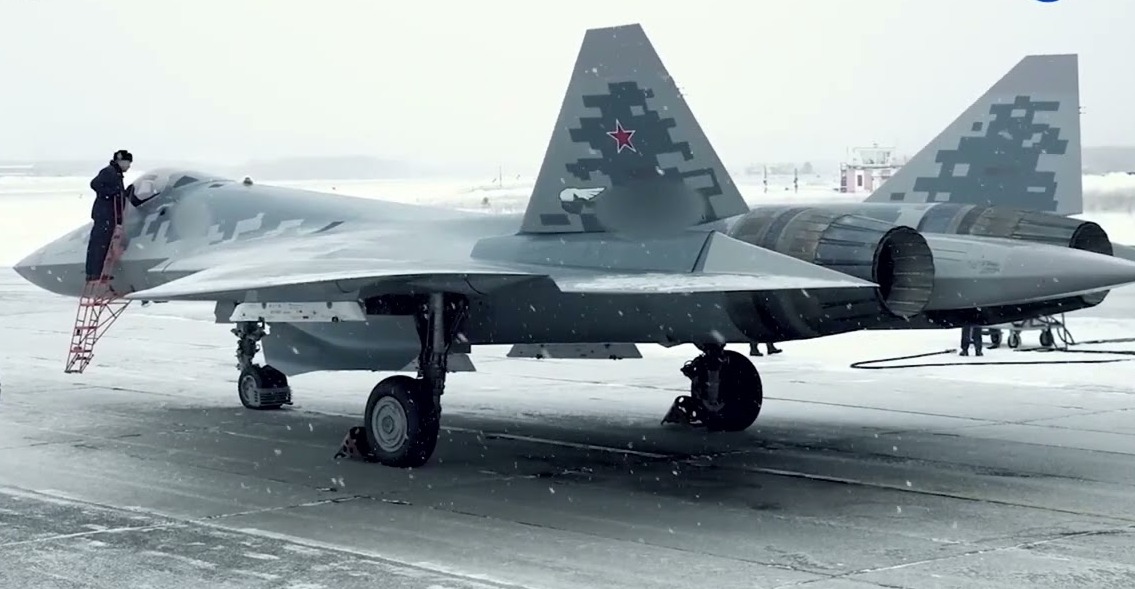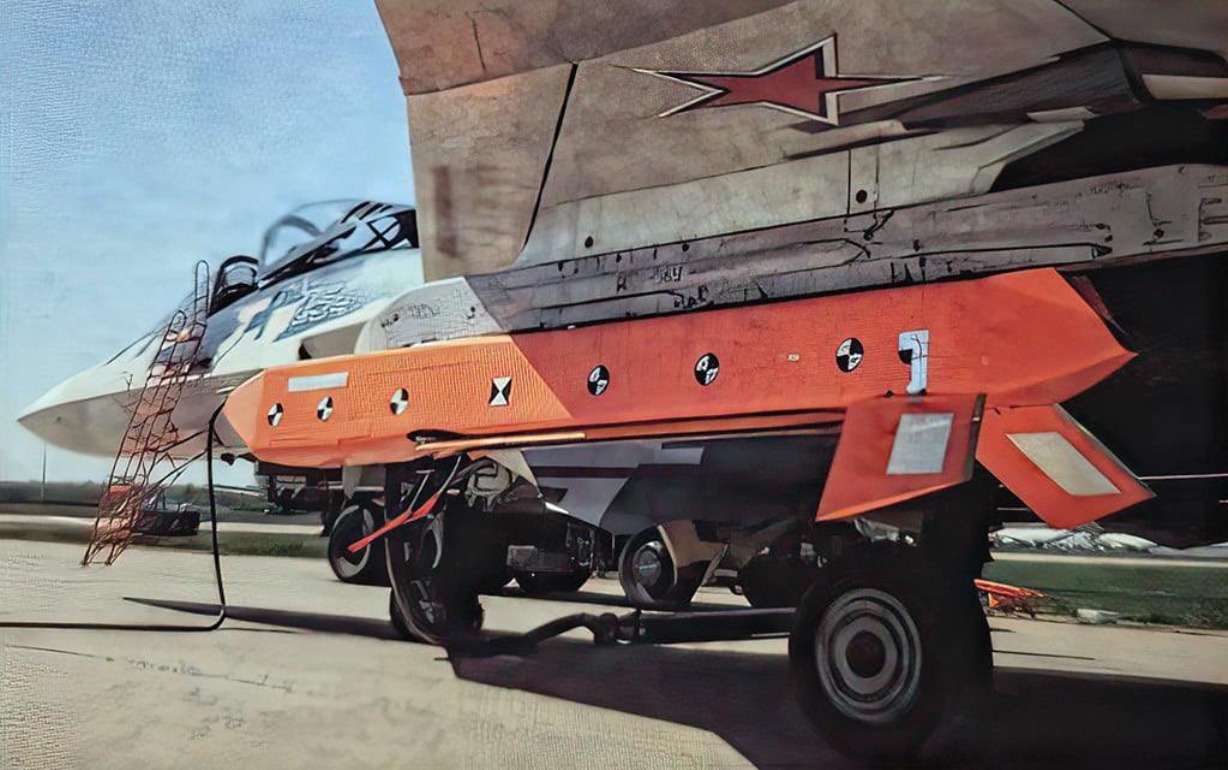The United Aircraft Corporation (UAC) announced on September 12 in a Telegram post that it had handed over a batch of new Su-57 and Su-35S aircraft to the Russian Aerospace Forces (VKS).
The UAC post didn’t specify the number of Su-57 fighters delivered. However, an accompanying video showed two Su-57 fighters operating on the tarmac and three Su-57s taking off.
A picture posted on the FighterBomber TC on September 6 showed three Su-57 aircraft in close formation. These were likely the three new production aircraft delivered by UAC.
In 2023, the UAC announced a ramp-up in its Su-57 production capability and a spruce-up of its aircraft assembly line. It said it had eliminated bottlenecks, not just in the final assembly shop but throughout the entire production cycle.
Procurement of high-tech components from supplier factories was streamlined and aircraft assembly technology improvements were initiated.
The aim of the production ramp up was to double the rate of production of the aircraft.
Serial production figures for the past years are as follows
Year: Su-57 Delivered
- 2020 1
- 2021 3
- 2022 6
- 2023 12
Based on the ramp-up, Su-57 production in 2024 was projected at 24 fighters. Curiously, the recent delivery of 2 or 3 Su-57 fighters is the first known delivery by UAC for the year.
Production Shortfall
If the UAC has been able to deliver just 2 or 3 aircraft to date, it’s unlikely that it will meet its production target of 2024.
However, the UAC isn’t obliged to announce the delivery of all its production batches. If there is indeed a slip-up in the production target this year, it’s likely due to upgrades or modernization mandated by the fighter’s operational performance/utilization during the ongoing SMO.
In July, on the occasion of the 85th anniversary of the Sukhoi Design Bureau, which developed the Su-57, the UAC announced the expansion of the Su-57’s functionality for special operations tasks.
Beijing Plans ‘Compulsory’ Military Training For Chinese Students To Boost China’s National Security
“The latest fifth-generation Su-57 fighter is used to solve the most complex tasks. It is capable of performing tasks in conditions of dense enemy air defense due to its increased stealth and survivability characteristics. Despite the high characteristics of existing aircraft, today the Sukhoi Design Bureau is working on improving and expanding its functionality for the tasks of the Air Defense Forces,” UAC reported.
The UAC emphasized that “the Su-57 is part of the central combat link of the special operation along with the Su-34 and Su-35. It is the joint use of these three types of aircraft that allows for a comprehensive response to emerging threats.”
The Su-34 functions as the combat “workhorse” under the protective cover of the Su-35.
Clearly, the Su-57 is still evolving. Incorporating new capabilities mandates changes in the production process and increased sub-systems testing.
The UAC statement covering the recent delivery could hint at such changes when it states, “Today, at the UAC enterprise, where fighters are produced, production is being updated. As part of the implementation of promising technical re-equipment projects, construction and installation work was completed at new facilities of the flight test station. To expand the serial production of the Su-57, the construction of an additional building has begun, where fifth-generation aircraft systems will be tested.”

Integration Of New Weapons
Another possible reason for production delays, if there are any, could be the need to integrate new weapons with the aircraft.
Russia is known to be developing several new air-to-surface weapon systems based on the experience of its forces in the SMO over the past 2 1/2 years.
One illustrative example: In August, it was reported that Russia had begun producing the combat UAV “Monochrome,” which can be launched from the Su-57 to penetrate enemy rear areas.
A photograph of the Su-57 with the S-71M “Monochrome” UAV mounted under its wing surfaced online. The photo was taken on April 18 during “Monochrome” testing.

The UAV resembles an “air-to-surface” cruise missile with a trapezoidal fuselage, similar to the British Shadow Storm. However, unlike a cruise missile, the drone is equipped with cameras and can be operated from the aircraft to strike enemy targets with mini-bombs.
The “Monochrome” can also be used to designate targets for weapons of its Su-57, as well as for fighters operating in conjunction with it.
The S-71M combat UAV was needed to extend the range of aviation and enable operations against enemy rear areas in conditions of a layered air defense system.
A simpler version of the Monochrome, the S-71K “Cover” is an ordinary air-launched cruise missile equipped with a cluster warhead. Integrating the S-71M with the Su-57 must have been challenging as well as time-consuming.
New Engines?
In December 2023, TASS reported, quoting two high-ranking sources close to the Russian Aerospace Forces (VKS), that all production Su-57 fighters transferred to the VKS in 2024 would feature second-stage AL-51 engines.
The Stage 2 engine features a serrated exhaust nozzle, also referred to as a chevron nozzle. The engines seen on the fighters delivered by the UAC, however, didn’t feature serrated exhaust nozzles.
The Stage 2 engine serrated nozzles improve thrust efficiency, stability, maneuverability, and performance while reducing engine noise.
Most importantly, serrated exhaust nozzles can contribute to reducing the aircraft’s infrared (IR) and radar signatures. By altering the exhaust plume’s temperature distribution and shape, serrated nozzles can make the fighter harder for IR and radar sensors to detect and track.
Conclusion
As stated earlier, there is no hard evidence that the Su-57 production rate has fallen short of the target this year. However, the possibility that substantially more than 2-3 fighters have been delivered this year is real.
The delay in upgrading the Su-57 with AL-51 engines is obvious.
Even if the Su-57 production rate has fallen short of the target, this is not a cause for concern for Russia.
For one, VKS is currently not heavily reliant on the Su-57.
Low Lifecycle Costs
It has been reported that the Su-57’s flyaway cost is approximately $35 million per aircraft, depending on rouble exchange rates. If that is so, it would make the Su-57 less than half as expensive to procure as the Chinese J-20 or the much lighter single-engine F-35.
It is also reported that the Su-57’s lifecycle costs (acquisition and operations) are comparable to those of the Su-27, Su-30, and Su-35, which it was designed to replace.
Also, the Stage 2 AL-51 engine to be fitted on the Su-57 not only gives the fighter supercruise a longer range but also cuts down operating costs because of better fuel consumption and longer engine life.
Under the circumstances, it makes sense for the UAC to focus more on honing the platform rather than on meeting production rate targets.
- Vijainder K Thakur is a retired IAF Jaguar pilot, author, software architect, entrepreneur, and military analyst.
- VIEWS PERSONAL OF THE AUTHOR
- Follow the author @vkthakur




